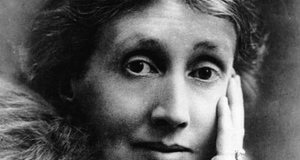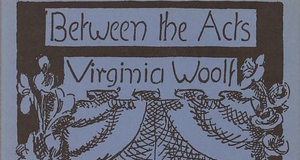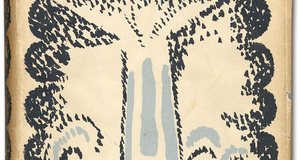Gender and Unity of the Self in Virgina Woolf's Orlando
By
2011, Vol. 3 No. 05 | pg. 1/1
KEYWORDS:
The confluence of biography and fiction in Virginia Woolf's Orlando raises the question, of which the book is highly aware, of which genre facilitates the proper perception of the truth. As Woolf writes, “Life, it has been agreed by everyone whose opinion is worth consulting, is the only fit subject for novelist or biographer” (267).1 In this book (there’s no point in defining it as novel or biography) Woolf has attempted to find truth through an examination of her friend Vita Sackville West, and has decided upon synchronicity as a more meaningful apparatus of illumination than chronology and causality. The difficulty of such an undertaking lies in the necessary relation of the seemingly fantastical events, as implied by Jungian synchronicity, into a unified Truth—in this case, the self. Woolf believed, as she indicated numerous times, in a “granite and rainbow” approach to biography—that the reality of the self lay in understanding both of “solid facts and intangible personality,”2 and in Orlando, the first of her works to bear the subtitle “A Biography,” we see her first and perhaps most liberated opportunity to test her belief: the change of sex and confusion of gender forces us to question the degree of federation between the duplicitous and often paradoxical manifestations of the self, and more importantly, to ask how the relation of such fantastical events facilitates our understanding of the subject. Woolf’s ultimate confrontation of the différance of identity3 appears on pages 308-314, an epic passage through Orlando’s thoughts with lengthy interjections of free indirect discourse by the biographer.4 In the course of this passage, each of the multifarious episodes of Orlando’s life is called upon as an individual manifestation of the self. The context of this call proclaims a great deal of independence for each manifestation: “It is the most usual thing in the world for a person to say, directly they are alone, Orlando? (if that is one’s name) meaning by that, Come, come! I’m sick to death of this particular self. I want another” (308). Orlando calls for numerous versions of herself, detailed on page 309 and again in the book’s index: numerous people who participated to different degrees in society, added stylistic variance to “The Oak Tree,” and called their lovers by different names. We find the character longing for another self, and able to transition relatively easily and quickly between various different identities, and we wonder to what extent these different people are governed by the name ‘Orlando’ and their shared heritage and physicality. A simplification of the first sentence on page 310 shows that indeed Orlando is governed by a hierarchy of selves: “what appeared certain…was that the one she needed most kept aloof,…as happens when…the conscious self…wishes to be nothing but one self.”5 She continues that this conscious self is in turn governed by “the Key self, which amalgamates and controls them all,” but this thought is weakened by the phrase “they say,” and so Orlando’s search for her true self continues in ambiguity. Like the reader, Orlando has been fooled by literature into believing in the one true identity, but hearsay evidence won’t facilitate actualization, and the biographer goes on to chide the reader for reading too far into her “rambling talk” (310). At the end of the page we still have no idea who the unified Orlando might be—if such a person exists—and whether or not the speech of the conscious self—the one self to acknowledge and engage with the multiplicity of its brethren—is leading us any closer to such an actualization.Finally, “the Orlando whom she had called came of its own accord…she was now darkened, stilled, and become, with the addition of this Orlando, what is called, rightly or wrongly, a single self, a real self” (313-314). This would seem to solidify at least the biographer’s notion of an essential self (though the shape and context of the passage would indicate Woolf as well, as will be shown), except that this passage does not affirm any hierarchy of identities. The key lies in the following sentence, with the slightly anachronistic application of différance: “it is probable that when people talk aloud, the selves…are conscious of disseverment, and are trying to communicate but when communication is established there is nothing more to be said.” Woolf was clearly thinking along the same lines as Georg Hegel in this deconstruction; her understanding of the alienating effects of difference is paralleled only by her facility in self-definition through the very same phenomena.6 The key to understanding this long and difficult passage is the appearance of the bird motif. Throughout the book, birds have appeared at various events related to self discovery, from his discovery of natural beauty through peacocks and rooks on page 16, to the thousand vultures who pick bare her visions of the Gypsy landscape on pages 150-151, to the birds that lead her to Shelmerdine on 248-250 and the birds that dash the windows during her marriage on page 262.7 In this passage is the first of two appearances of the goose: “Haunted! Ever since I was a child. There flies the wild goose. It flies past the window out to sea. Up I jumped…and stretched after it. But the goose flies too fast…Always it flies fast out to sea and always I fling after it words like nets” (313). It is directly after this passage that Orlando’s true self manifests itself of its own accord. The passage does not seem entirely noteworthy until the metaphor is embodied in the final lines of the book: “And as Shelmerdine…leapt to the ground, there sprang up over his head a single wild bird. ‘It is the goose!’ Orlando cried. ‘The wild goose…’” Having deconstructed this passage of the book, we may say with some certainty that the essentiality of identity is an integral aspect of its meaning. We can therefore say that the various forms embodied by the character are constructed meanings—their relevance is defined by their difference and deferment to other constructed forms in the concatenation of events that leads to the actualization of Orlando as manifested in the trinity of male, female, and goose at the end of the book.8 The ending gives us a clue as to why Woolf would bother to construct so many selves, and specifically why she plays so overtly with the concept of gender. Her synchronic revelation of truth is useful in exploring Sackville-West’s heritage and societal roles, but one might expect, given the libertine reputation of the couple’s relationship and social circle, that a more literal representation of Vita’s sexuality might bring the reader to a coherent understanding of the author’s views on sexuality as pertaining to the self. However, Woolf seems to have found this more properly facilitated through the concept of the Other, the Hegelian notion that individuals experience alienation as a result of perceived differences between others which are then resolved by a synthesis of common truths. The seeming paradox of this idea in relation to différance, which as previously noted characterizes Woolf’s view of the particular self, is the genesis of the book: after a cyclical series of centuries during which Orlando alternates between infatuations with society and solitude (punctuated by brief incidents of false Others such as Sasha and the Archduke), she finally synthesizes her own identity with the final piece of the puzzle. Her Other, Shelmerdine, is the final different self necessary to understand her essential self.10 It is no coincidence that Shelmerdine is described in terms—“romantic and chivalrous, passionate, melancholy, yet determined” (250)—that could equally fit Orlando, and no coincidence that they instantaneously invent their own language:11 this would only be possible if the signifier and signified were connected by a golden chain, as Derrida put it. One may establish, logically, that the only entity suitably essential for such a phenomenon is the essential self. That Shelmerdine is, if not also trans-sexual, equally androgynous to Orlando, furthers the connection. Simultaneous to their linguistic unity, when, in their surprise over the sexual continuity of their coupling, they have to “put the matter [of their sexual identities] to the proof at once” (258), we see the synthesis of the self on both the ‘granite’ and ‘rainbow’ levels. It would be hazardous and unnecessary to infer that Shelmerdine is not a real person, or that in a roman á clef turn he represents Woolf herself: the synchronicity of the text renders the nature of Shelmerdine’s existence irrelevant. However, the character provides a clue as to why Woolf would bother to play so heavily on the construct of gender. It does seem necessary over the course of Orlando’s life to either relate to an Other or to retreat to nature; this is shown by the numerous Other episodes and her affinity to animals, and as theorized previously, the confluence of the three at the end of the book signifies the actualization of the self. The unsuccessful Others, most notably Sasha and the Archduke,12 fail because they attempt to enforce a societal construct of gender: Sasha deceives him by appealing to his noble masculine sexuality, and we are told that “Orlando was outraged by the foulness of his imagination that could have painted so frail a creature in the paws of that hairy sea brute” (52).13 Likewise the Archduke, whose sexual transitivity (with an explicit parallel drawn on page 179 “she must in future be known as the Archduke”) and iconoclasm should make him a suitable candidate, fails in his attempt to project on Orlando “the Pink, the Pearl, the Perfection of her sex” (179), which she finds “highly ridiculous.” On the other hand Shelmerdine, being similarly androgynous and similarly inclined both physically and temperamentally,14 allows Orlando not only to define her self to another degree—arguably the final degree, given her completion of “The Oak Tree” in the following episode—but also to realize the inescapable, un-constructed fact of her sex: procreation. Through this final deconstruction of the gender relationship we see, as Hegel would argue, both the alienation resultant from their essential differences of the self and the literal synthesis. 1.) Woolf, Virginia. Orlando: A Biography. New York: Harcourt, 1928. 2.) This phrase is used on page 77, and more formally in an essay entitled “The New Biography.” This information and the following quote are from an essay by Elizabeth Cooley entitled “Revolutionizing Biography: Orlando, Roger Fry, and the Tradition” published in the South Atlantic Review, May 1990. 3.) By which I mean the definition of the self through negation and differentiation, as will be further explained later in Hegelian terms. However, I do mean to imply a connection through this text of Hegel’s theory of self-definition with Derrida’s writings on linguistic definition. 4.) I am using ‘the biographer’ to mean the implied author, or rather the actual voice of the text. I am attempting not to confuse this voice with Woolf, but I believe it is fair to implicate Woolf with regards to the ideology and methodology of the text as a whole. I am using the term différance to mean the definition of identity by means of difference and deferment to other identities within the character. 5.) The ellipses refer to subordinate clauses that qualify or further explicate the previous word. Why Woolf chooses to complicate her sentence structure here is for another essay, but is probably a textual manifestation of Orlando’s racing, quasi-articulate thoughts, which in turn mimic her driving style. This would make sense in light of the prominence and urgency of the conscious self, the only self of those mentioned to express desire and, one would assume, articulate thoughts. 6.) Whether or not Woolf read Hegel is not relevant. I am merely using his ideology of definition through negation to explain the Essentialism of the self in this work and its resulting implications on gender. 7.) We could also view this phenomenon as a subset of the motif of animals that run throughout the book, with dogs and horses being especially prevalent, such as in her escape from Turkey after her sex change, as well as the leopard (wind vane) that represents the wind at her house. The birds are most specifically linked to her husband. 8.) I do not mean to imply a Christian message to the book. Rather, at its end we have the union of the Creator with its manifest Other and its manifest Essence. Though the parallel may be apparent, this extraction of meaning is not as relevant as the simple stability of the triangular form that probably gave rise to both. 10.) I am choosing to use only the name Shelmerdine: not only does one have “more than two thousand” (314) selves, but it follows, as the biographer explains, that one has various ways of perceiving and addressing each. ‘Shelmerdine’ therefore refers to the character in essentia. 11.) There are numerous examples of this, from Shelmerdine’s guessing Orlando’s name on page 251 to the supply of biscuits indicating his affair with a negress on page 258, and most explicitly on page 259-60 to describe Shelmerdine’s instant understanding of her temperament: “for him too, the word signified, mystically, separation and isolation and the disembodied pacing the deck of his brig in unfathomable seas.” 12.) I am choosing to mention the romantic Others, but one could argue that Nick Greene and the gypsy Rustum are other manifestations of possible Others. As Sasha and the Archduke are the only sexual Others, they are the only ones that complete this aspect of Orlando’s self. The fact that they happen to be heterosexual love interests also falls in line with Hegel’s view of the Other, and renders the carriage of this concept through the book far more coherent. 13.) Unfortunately, there is not a more suitable quote: this is because Sasha’s voice is noticeably absent from the narration. She fails Orlando mainly because exists during their affair as a projection of his gendered values, as opposed to the real woman who, as he later appreciates (as a she), rejects him for the same reason he (as a she) rejects the Archduke. This issue needs further explication, but I do not have time or space to do so. 14.) By which I mean he shares her feelings of alienation and methods of expression, and her need to commune with nature, etc. The fact that neither feels compelled either to explain feelings in detail or to obsessively spend time together also sets this relationship apart from the others, against whom Orlando’s feelings of alienation cannot be synthesized. Suggested Reading from Inquiries Journal
Inquiries Journal provides undergraduate and graduate students around the world a platform for the wide dissemination of academic work over a range of core disciplines. Representing the work of students from hundreds of institutions around the globe, Inquiries Journal's large database of academic articles is completely free. Learn more | Blog | Submit Latest in Literature |


















